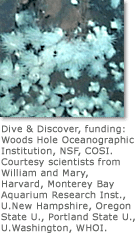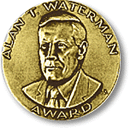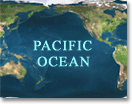 |

|
 |

Science Board
to Host Research Priority Setting Symposium
The National Science Board (NSB) will host a two-day public symposium
May 21-22 to discuss priority-setting and coordination in the development
of federal budgets for research. NSB’s Committee on Strategic
Science and Engineering Policy Issues has undertaken a two-year
study on the topic and recently distributed a draft discussion document
titled The Scientific Allocation of Scientific Resources, summarizing
the committee's preliminary findings and recommendations
(see: http://www.nsf.gov/nsb/documents/2001/nsb0139
). The symposium will focus on this document, and will also hear
from top policy analysts and political leaders.
MORE
Symposium Information
Media Advisory
(posted May 16, 2001)
|
 |
|
 Global
Science and Technology Week, May 6-12, 2001 Global
Science and Technology Week, May 6-12, 2001
The National Science Foundation is proud to participate in Global
Science and Technology Week. GSTW celebrates the expanding opportunity
for the world's best scientific minds to transcend national boundaries
and collaborate on new discoveries and shared global problems.
More...
(posted May 7, 2001)
|
 |
|
 Scientists
Release Images of Hydrothermal Vents Found in the Indian Ocean Scientists
Release Images of Hydrothermal Vents Found in the Indian Ocean
Scientists exploring a remote area of the central Indian Ocean seafloor
two-and-one-half miles deep have found animals that look like fuzzy
snowballs, and chimney-like structures two stories tall spewing
super-heated water full of toxic metals. The findings, released
on the Woods Hole Oceanographic Institution (WHOI) 's Dive and Discover
Web site were made at the start of a month-long National Science
Foundation (NSF)-funded expedition. "This expedition has been
four years in-the-making: we needed to get a remotely-operated vehicle
(ROV), a large research vessel, and a multi-disciplinary group of
scientists to a location distant from the U.S.," said Phil
Taylor, director of NSF's biological oceanography program. "After
the Japanese discovery of some hydrothermal vent activity in the
region, excitement grew about what might be found, and how resident
ecosystems in and around these vents might differ from those studied
in the Atlantic and Pacific Oceans."
More...
(posted May 1, 2001)
|
 |
|
 NSF
Award Recognizes Wireless Pioneer NSF
Award Recognizes Wireless Pioneer
Vahid Tarokh, a 34-year-old associate professor at the Massachusetts
Institute of Technology (MIT) and a recognized leader in the research
field of wireless communications, will receive the National Science
Foundation's (NSF) highest honor for young scientists and engineers.
The Alan T. Waterman Award, named after NSF's first director, will
be presented at the National Science Board (NSB) dinner on May 23.
Tarokh is the primary inventor of "space time coding,"
a new technique that significantly improves the speed and reliability
of wireless data transmission. More...
(posted May 1, 2001)
|
 |
|
 Tracking the Night Sky: Cameras Make it Easy
Tracking the Night Sky: Cameras Make it Easy
Anyone with web access can view the night sky live through a wide-angle
lens, thanks to rooftop cameras being installed at astronomical
observatories in the United States and overseas. The cameras, dubbed
CONCAMs, will create a continuous record of the sky -- contributing
scientific data and allowing students, teachers and astronomers
to track changes over time. "The pictures are a valuable tool
for anyone studying bright stars and bright transient phenomena
such as meteors," said Robert Nemiroff, a National Science
Foundation (NSF)-supported astronomer at Michigan Technological
University who led the camera development. Nemiroff is known as
one of the creators of the popular NSF-supported website, "Astronomy
Picture of the Day." More...
(posted May 1, 2001)
|
 |
|
 Scientists
Suggest New Index to Capture "Flavors" of El Niño Scientists
Suggest New Index to Capture "Flavors" of El Niño
Just as the Federal Reserve uses more than one index to measure
the health and state of the economy, scientists at the National
Center for Atmospheric Research (NCAR) believe it is essential to
have at least two climate measures to capture all "flavors"
of El Niño. Climate scientists have long used changes in
sea surface temperatures in specific regions of the Pacific Ocean
to characterize El Niño events. But using just that one temperature
index does not give a complete picture of the climate phenomenon,
according to scientist Kevin Trenberth of NCAR. "El Niño
comes in many different flavors, "said Trenberth. "Each
has a different and distinct character."
More...
(posted May 1, 2001)
|


|

